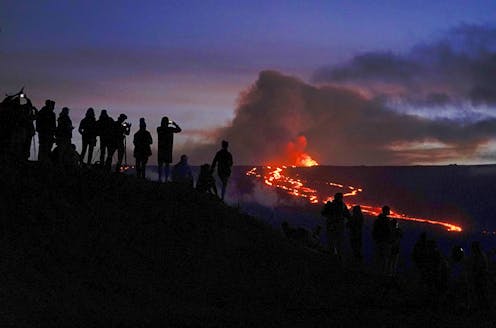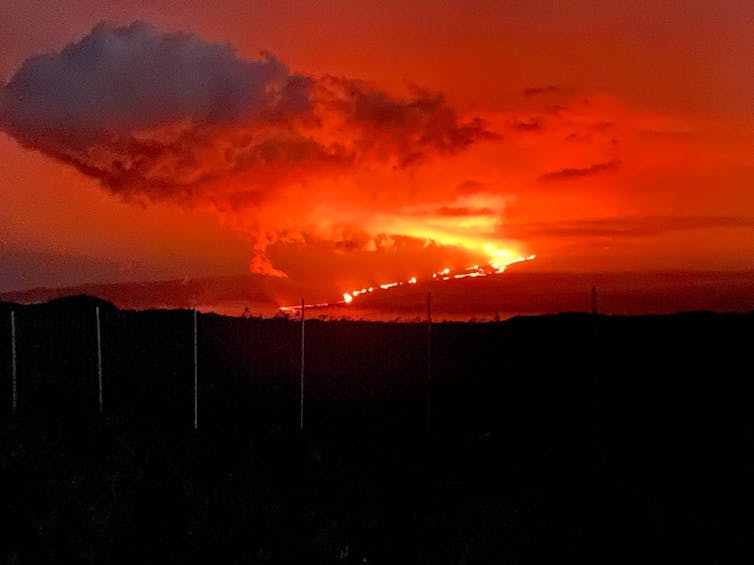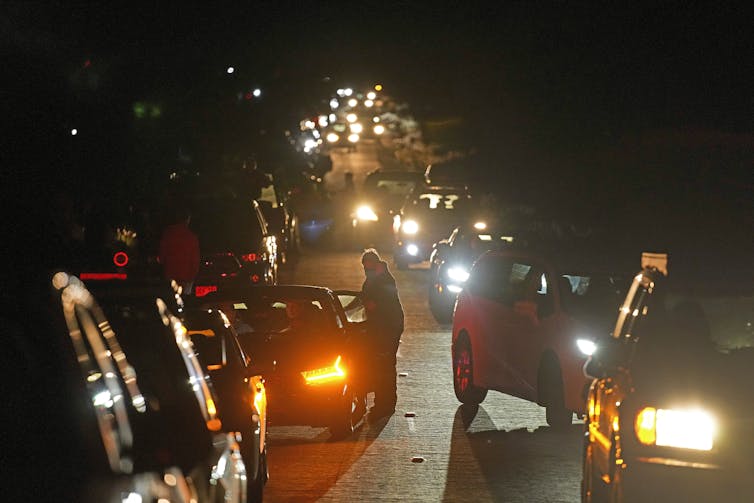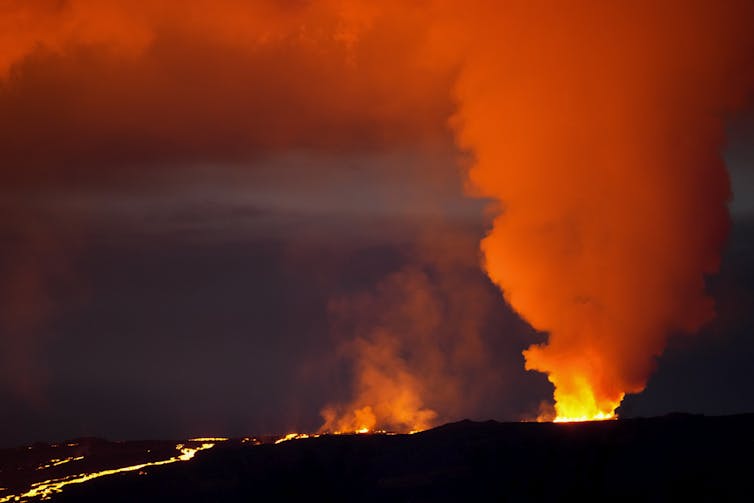
On Nov. 27, the Big Island of Hawaii’s Mauna Loa volcano — the largest active volcano in the world — erupted for the first time in 38 years. This eruption was very special because Mauna Loa historically erupts very frequently, every six years on average.
As the director of CIFAL York, Canada’s first hub for the United Nations Institute for Training and Research (UNITAR), I recently attended the global CIFAL directors’ meeting in Honolulu, Hawaii organized by UNITAR and CIFAL Honolulu.
As a disaster and emergency management professor with research interest in volcanoes, I had planned to tour the Big Island, which is home to some of the most active volcanoes in the world, including Kilauea, Hualalai, Kohala and Mauna Loa. To my amazement, my visit coincided with Mauna Loa’s eruption.
It took me two attempts to finally get a glimpse of the eruption. My first attempt on Dec. 3 was thwarted because of low visibility, caused by clouds covering the volcano, and a lack of parking availability on side roads. Some of the side roads were temporarily converted to one-way streets to divert traffic away from the busy, but orderly, main highway near the volcano summit.

My second attempt was successful. I departed from my hotel in the town of Hilo at 2 a.m. and arrived at the nearest open side road, as close to the eruption site as possible. The sky was clear, and the beautiful and glowing reddish volcano plumes were visible as far as Hilo.
Hazard tourism
The Hawaii Volcanoes National Park and volcanic eruptions attract many tourists, including scientists, nature photographers and the public, from all over the world. Some of the recorded human impacts of volcanic eruptions in the Big Island are attributed to hazard tourism.
Hazard tourism refers to touristic activities that occur near historical or existing natural or technological hazard sites, or disaster-impacted areas. Volcano tourism is one of the most popular types of hazard tourism and involves the observation, photography and study of active volcanoes and their geological and natural phenomena.
Read more: Where Mauna Loa’s lava is coming from – and why Hawaii’s volcanoes are different from most
Volcanic eruptions can either be explosive or effusive. Unlike explosive volcanoes that shoot ash and magma up into the atmosphere, most Hawaiian eruptions — including the Mauna Loa — are known for their nonexplosive and effusive nature. This means they have less direct human impacts in the form of injuries and fatalities.
During their eruptions, effusive volcanic eruptions create large volumes of lava that flow slowly downhill into the surrounding environment. These flows can damage vegetation, infrastructure such as roads, and properties.
While Hawaiian volcanoes do not produce ash, they produce a huge amount of volcanic smog, also known as vog. It contains sulphur dioxide, which can cause fatal health risks to humans, especially for those with respiratory illnesses.
Safety procedures
My visit happened during low season, but seeing as we are approaching the holiday spike, more people are expected to visit Hawaii in the coming days — the Big Island in particular. Managing visitors will be a significant task for authorities.
When volcanic eruptions happen, emergency managers have an additional task of managing hazard tourism. These include managing the tourist crowds trying to get as close as possible to the eruption sites.

To reduce the risks to visitors, authorities in the Big Island implement several measures when eruptions happen. These measures include restricting parking on certain segments of nearby highways, closing roads and trails that are subject to lava flow and other volcanic hazards, providing information to visitors, and continuous monitoring of the eruption activities.
The main goal for authorities is allowing visitors to watch volcanic activity safely. While this requires planning from the local and state authorities in Hawaii, it also requires close co-operation and attention of visitors to safety procedures and high levels of preparedness.
How visitors can be prepared
It is very important for tourists to properly prepare for excursions to see volcanic eruptions. Visitors should allocate sufficient time for their visit and expect delays, depending on how busy the roads and the sites are.
Tourists should understand and follow the traffic and all safety guidelines and roles throughout their visits. They should wear adequate footwear for rough grounds, clothing for chilly and windy weather at night, and carry emergency kits including flashlights for when it gets dark.

Visiting natural hazard sites poses risks to visitors. Some of these hazards are visible, like vog, and some invisible, like cooled lava tubes that can collapse when walked on, or invisible but toxic gases.
Studies show that, unfortunately, most people visiting such sites are not properly prepared. Watching this amazing and spectacular natural phenomenon will be a once-in-a-lifetime experience for many people, but visitors should understand the potential risks of exposure to volcanic hazards and prepare themselves for visiting such sites.
Ali Asgary does not work for, consult, own shares in or receive funding from any company or organisation that would benefit from this article, and has disclosed no relevant affiliations beyond their academic appointment.
This article was originally published on The Conversation. Read the original article.







